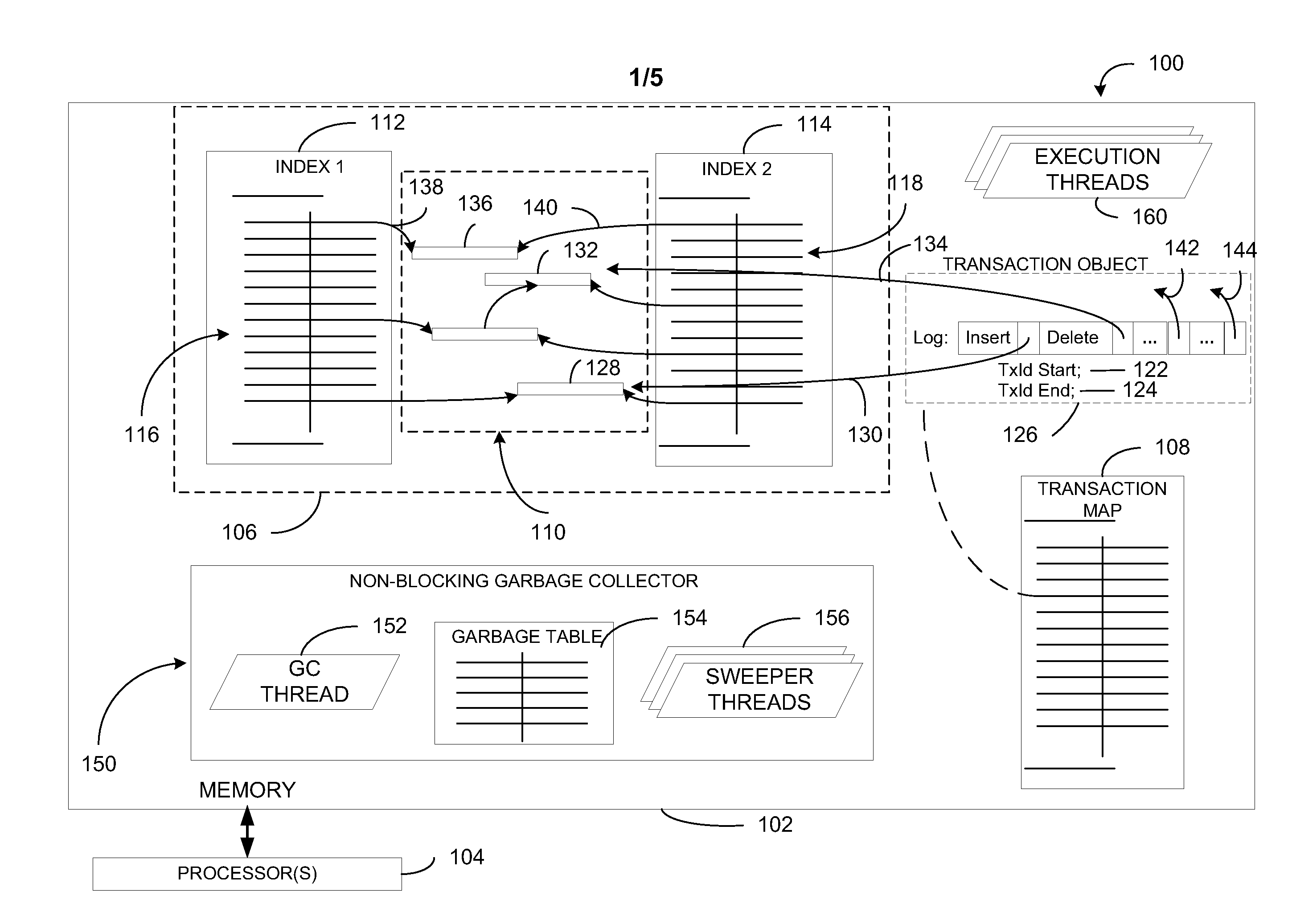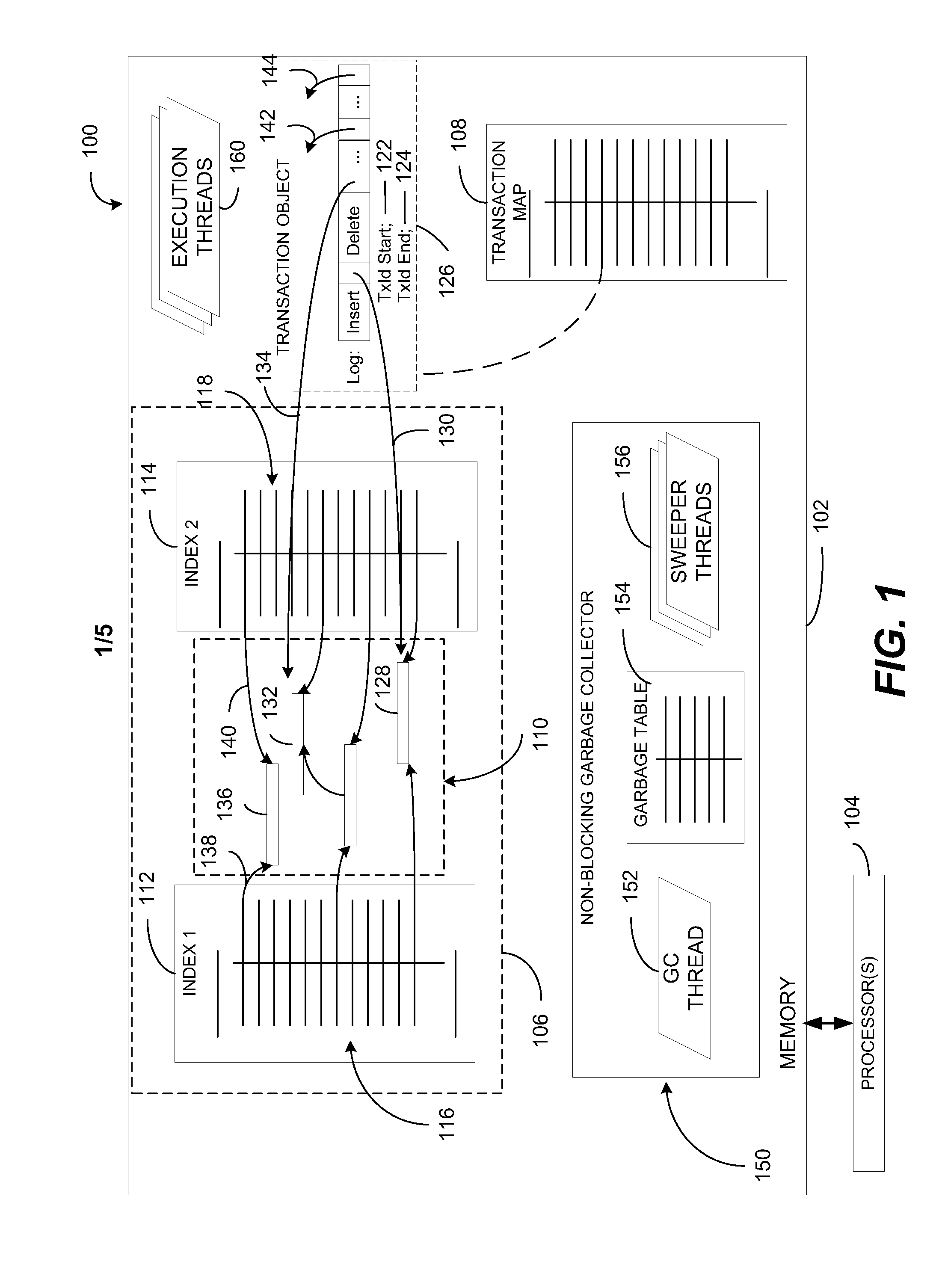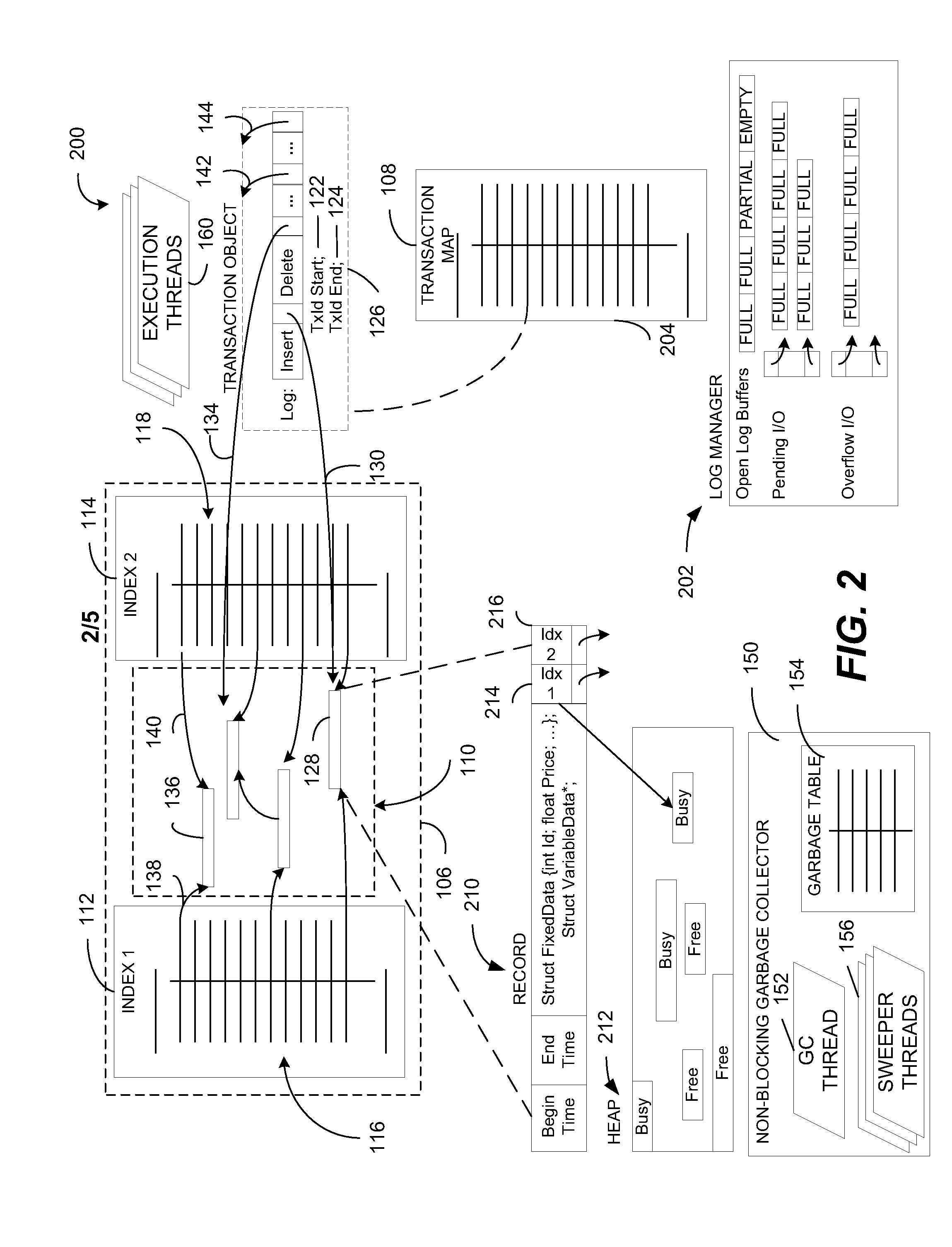In-memory database system
a database system and database technology, applied in the field of in-memory database system, can solve the problems of limiting the level of concurrency and the total throughput of the system, not being a reason to keep rows clustered in memory, and unable to achieve maximum performance on current and future servers, etc., to achieve efficient scaling across a large number of processors
- Summary
- Abstract
- Description
- Claims
- Application Information
AI Technical Summary
Benefits of technology
Problems solved by technology
Method used
Image
Examples
Embodiment Construction
[0012]In a particular embodiment, a computer system is disclosed that includes a memory and a processor coupled to the memory. The processor is configured to execute instructions that cause execution of an in-memory database system that includes one or more database tables. Each database table includes a plurality of rows, where data representing each row of the plurality of rows is stored in the memory. The in-memory database system also includes a plurality of indexes associated with the one or more database tables. Each index of the plurality of indexes is implemented by a lock-free data structure. The in-memory database system further includes update logic configured to update a first version of a particular row to create a second version of the particular row. The in-memory database system also includes a non-blocking garbage collector configured to identify and deallocate data representing outdated versions of rows. These features enable the database system to execute a transa...
PUM
 Login to View More
Login to View More Abstract
Description
Claims
Application Information
 Login to View More
Login to View More - R&D
- Intellectual Property
- Life Sciences
- Materials
- Tech Scout
- Unparalleled Data Quality
- Higher Quality Content
- 60% Fewer Hallucinations
Browse by: Latest US Patents, China's latest patents, Technical Efficacy Thesaurus, Application Domain, Technology Topic, Popular Technical Reports.
© 2025 PatSnap. All rights reserved.Legal|Privacy policy|Modern Slavery Act Transparency Statement|Sitemap|About US| Contact US: help@patsnap.com



